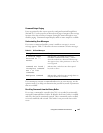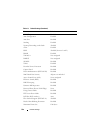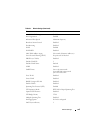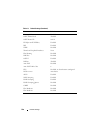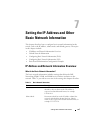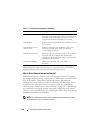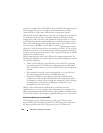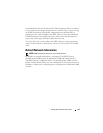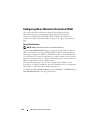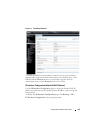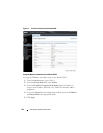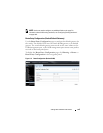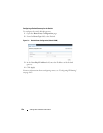
Setting Basic Network Information 149
Configuring the DNS information, default domain name, and host name
mapping help the switch identify and locate other devices on the network and
on the Internet. For example, to upgrade the switch software by using a TFTP
server on the network, you must identify the TFTP server. If you configure
the switch to use a DNS server to resolve hostnames into IP addresses, you
can enter the hostname of the TFTP server instead of the IP address. It is
often easier to remember a hostname than an IP address, and if the IP address
is dynamically assigned, it might change from time-to-time.
How Is Basic Network Information Configured?
You must use a console-port connection to perform the initial switch
configuration. When you boot the switch for the first time and the
configuration file is empty, the Dell Easy Setup Wizard starts. The Dell Easy
Setup Wizard is a CLI-based tool to help you perform the initial switch
configuration. If you do not respond to the Dell Easy Setup Wizard prompt
within 60 seconds, the console> prompt appears, and you enter User
Configuration mode.
For more information about performing the initial switch configuration by
using the wizard, see the
Getting Started Guide
at
support.dell.com/manuals.
If you do not use the wizard to prompt you for the initial configuration
information, you can enable the DHCP client on the switch to obtain
network information from a DHCP server on your network, or you can
statically assign the network information.
After you configure the switch with an IP address and create a user account,
you can continue to use the console connection to configure basic network
information, or you can log on to the switch by using a Telnet client or a web
browser. You can change the IP address information and configure additional
network information from the remote system.
What Is Out-of-Band Management and In-Band Management?
The Dell Networking 3000 and 4000 series switches have an external port
intended solely for management of the switch. This port is the out-of-band
(OOB) management port. Traffic received on the OOB port is never switched
or routed to any in-band port and is not rate limited. Likewise, traffic received
on any in-band port is never forwarded or routed over the OOB port. The only
applications available on the OOB port are protocols required to manage the



